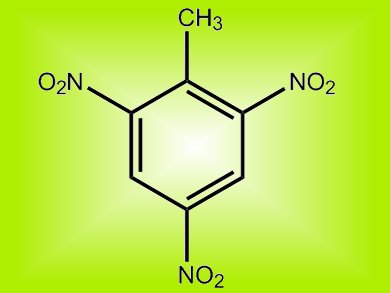Researchers at the University of California, Riverside, USA, and their colleagues have developed a new explosive detection device based on a selective zeolite membrane supported on porous stainless steel and alpha-alumina. UV treatment at low temperature removes organic residues during preparation leaving behind a membrane that can absorb trinitrotoluene (TNT, pictured) and other explosive vapors.
The team suggests that bundles of membrane fibres could be used as a preconcentrator and attached to a standard explosive detector thus lowering the threshold at which the instrument can detect explosives to below parts-per-billion concentrations.
Such a device could be critical in forensic analysis tying evidence to a suspect even if only traces of explosive are present. The team has shown that a preconcentration of 1000 times is possible with a TNT surrogate 1,3,5-trimethylbenzene and suggests that this should be possible with TNT in a real-world analysis.
- Highly Selective Zeolite Membranes as Explosive Preconcentrators,
Jie Zhao, Ting Luo, Xiangwen Zhang, Yu Lei, Ke Gong, Yushan Yan,
Anal. Chem. 2012.
DOI: 10.1021/ac301359j

